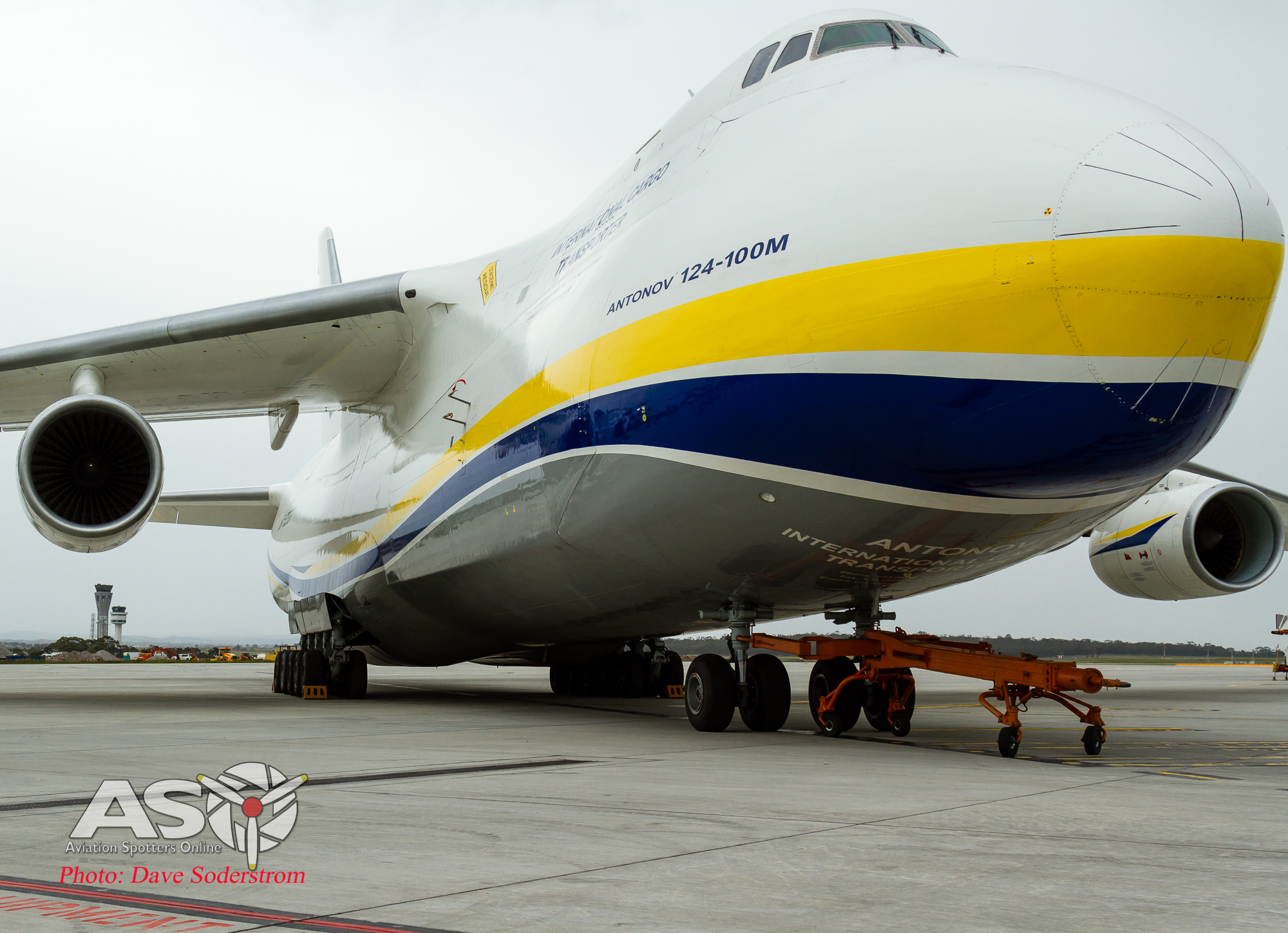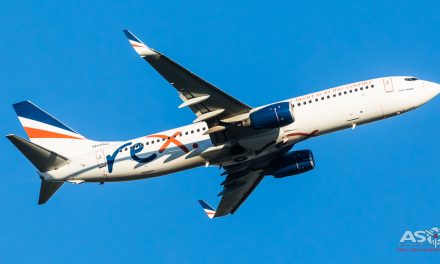Every year we are seeing new and exciting capabilities arrive into Australia and this year is no different. PAYS Airservice and Timberline Helicopters Incorporated have teamed up to bring out to Australia the first working civil Blackhawk, outside the United States and show case it’s capability not only in fire fighting but in any role that requires medium lifting helicopters. Arriving off the boat from the company’s main base of operation in Sand Point Idaho, in early January the Blackhawk UH-60A, MSN 80-23434 an ex US ARMY 1981 built aircraft was quickly assembled and flown to Scone to be ready for any fire fighting tasks.
So what does the Blackhawk bring to Australia that isn’t already here? ASO interviewed Timberline Helicopters Inc owner Brian Jorgenson about the Blackhawk and his career as a Helicopter Pilot.
ASO: How long have you had the Blackhawk ?
Brian: Two and a half years.
ASO: What other aircraft do you have in your company ?
Brian: We have two K-max Helicopters, a Huey and a MD530.
ASO: How do you find the Blackhawk compared to the other Helicopters in the company ?
Brian: It’s bigger,it’s faster and definitively smooth. It’s quite a nice aircraft for the pilot to fly. I get asked alot “which is my favorite helicopter ?” My typical answer is “which ever one I’m flying”
ASO: How much work was required to transform the Blackhawk from how you received it to how we see it now?
Brian: Well just in the conversion as far as paint stripping, repainting, pulling out the systems we don’t need was about 7500 man hours. That doesn’t included maybe another 1000 hours of paperwork to get it to a civil restricted category helicopter.
ASO: What sort of new equipment do you have to put in?
Brian: The only new equipment we put in was basically civilian radio’s and audio control. Some of the stuff the military uses is well “bullet proof” but I think we pulled out one radio head that was stamped 1970’s and it was still working. It wasn’t very high tech and the audio quality was poor making communication with the crew and ground personal difficult.
ASO: Whats the type of Bucket and size?
Brian: It is a Bambi Max bucket which can hold 3400ltr and Timberline has modified it with a snorkel pump which can pump at 90ltr a second which will fill the bucket in 38 seconds from any clean water source that is 30cm deep.
ASO: The setup allows for different types of drops ?
Brian: Yes the bucket has the capability for multiple drops.It can be all at once , which is an impressive amount of water, it can be dropped in multiply places for greater efficiency in many fuel types, and it can be dropped at a low discharge rate allowing for long trailing drops in grass type fires. One other advantage of this bucket is a good pilot will recognize early in the drop if the water is going where it is intended and if not close the bucket and come around for another run. This means more water on target where it will do the most good.
ASO: Is the call on what type of drop up to you or the ground controller ?
Brian: It’s mixed and depends on what type of fire, the fire we were on yesterday it was pretty much all assist where you can. There wasn’t alot of ground to air communication, in some case the ground guys were talking to the air attack and then the air attack helicopter over the fire ground was talking to us with where water was needed. We do have the capability to talk directly to ground crews in aircraft.
ASO: How many are you looking at converting?
Brian: This is just the start as we own four of them already, this is the only that looks like this . One has been cannibalized for parts and two others that are still in the Army colours.
ASO: Whats your experience in fire fighting?
Brian: I’ve been involved in Helicopter long line operations professionally for 12 years and I have about 14,500 hours of time on Helicopters. Out of that about 1000 hours is fire fighting. All that time has been done in the western side of the Untied States from the Canadian Boarder down to the Mexican Boarder.
ASO: How have you seen fire fighting evolve in that time?
Brian: For a while , in the states there was a big push for tanked aircraft and I see that reversing to some degree now. At one point it was “we have to have tanks to fight a fire” but I think that could be changing now as people realize that yes that is a great tool especially in the urban interface over large concentrations of people, however there are advantages of using a bucket. The aircraft is operated above most dangers such as wires, trees and blowing dust. Additionally it opens many more water sources where the bucket can be lowered into a small opening in trees or terrain and filled up. This means more water on the fire in a given amount of time. I have used alot of tools to fight fire over the years and in my opinion the bucket with the snorkel is the most efficient water delivery option available.
ASO: The long line you use is 150ft ?
Brian: Yes it’s 150 feet to the top of the bridle so all up it’s about 180 feet all up. So 60 meters from the aircraft to the bottom of the bucket.
ASO: Whats the range of the Helicopter ?
Brian: It’s 300NM one way dependent of wind and air temp. Zero wind it would be right on 300NM.
ASO: What’s the Helicopter’s speed with a full load?
Brian: We are allowed 140 knots with a load on but an empty bucket it is around 110 knots as it starts to trail so far behind the aircraft that it acts as a parachute. Every other Helicopter I’ve flown with external loads has a 80 knot VNE but the Blackhawk is 140 knots.
ASO: Is there any reason the Blackhawk was chosen ?
Brian: We operated a K-Max for 12 years and at one point Kaman had said they were looking at shutting down support for that platform. We had been looking at other aircraft types such as the S-61, Puma and highly modified UH-1’s.When the UH-60’s came up for auction it seemed like a good fit for us. So we are all happy with our decision.
ASO: What’s it’s burn rate for fuel?
Brian: 550ltrs and about two and a half hours till empty.
ASO: Is there anything really changed in the cockpit ?
Brian: We fly it with the door’s off so we can see the load but apart from that and the radios we changed it’s pretty much standard.
ASO: Was there any changes to the engines ?
Brian: There is a bigger engine available. , We currently have 1650 horse power per engine but we can upgrade to the GE-T700-701D engine which is 2000 horse power which does add some performance but for the altitude we run into in Australia the additional cost of $3.5 million for the engines doesn’t really make sense when the structural limit of the Helicopter is 8000lbs.
ASO: How did you get into flying?
Brian: My dad owned a Helicopter business so I worked around them , by the time I was eight or nine I was around Helicopters non stop and wanted to fly more then anything. I consider myself very lucky as I’m doing what I love and wanted to do.
ASO: What was your first aircraft you remember flying in ?
Brian: I remember my first helicopter ride like it was yesterday and it was when I was four years old. It was in a Kaman HH-43 “Huskie”. So it’s like the 1950’s version of the K-max that the USAF used, it lasted 30 to 45 seconds and I still remember it and I’m still pretty nut’s about helicopters.
ASO: What was the first Helicopter you flew ?
Brian: It was a 12C Hiller. It’s like a Bell 47.
ASO: How much of Timberlines work would be fires ?
Brian: For Timberline fires would be about 25-40% of all the work we do depending on the season. Our core business has been precision heavy load work, we started out as a Helicopter logging company and we still do that but it’s not our main focus.
ASO: What’s the maximum working height with a load?
Brian: We were in the states this year working at 13,500ft and still lifting 4,000lbs.
ASO: Is there anything you would like to add ?
Brian: If anyone see’s us out and about by all means come out and say hello as long as we are not fighting a fire but if we are sitting there come over. Come and say G’day.
Some stats for the first fire the Blackhawk worked at – The Mulligan Flat Fire – With Bucket on transiting at 110knots ,34nm in 18 mins and spent 3 hours on the fireground delivering 65 buckets @ 3,400 litres for a total of 221,000 litres.
ASO would like to thank Brian Jorgenson and the Timberline team and Ross Pay from PAYS Airservice for their time as well as access.
Mark Jessop.









Saw Taya’s Thing at Warrimoo on the 6-1-20. I think Brian Jorgenson was there or he employs lookalikes. I don’t think I can insert the image on this page. I live locally and it was great to see 6 helicopters waiting on the sporting field for the fire fighting.